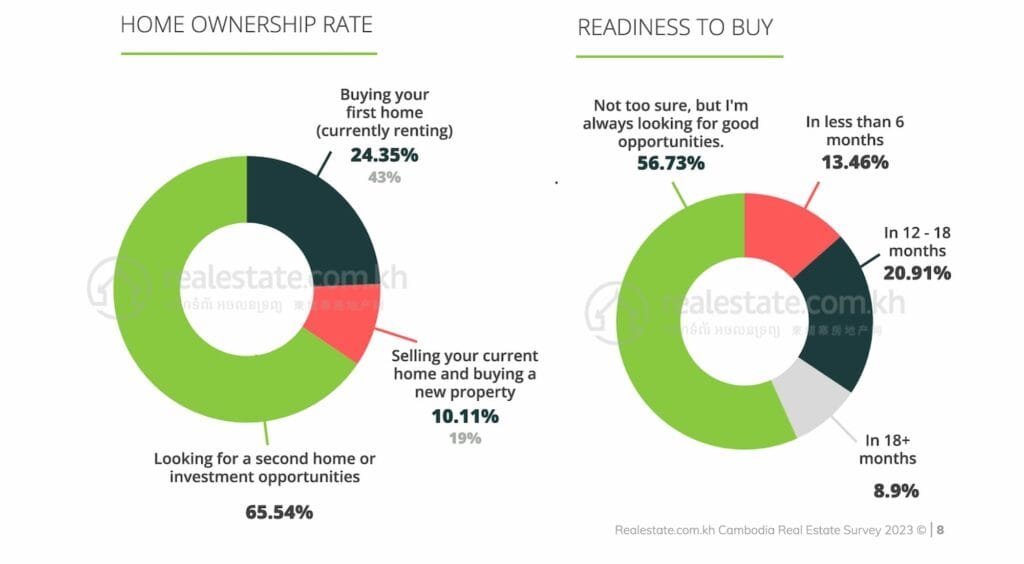Cambodia’s real estate sector has become a driving force behind the country’s construction boom. The rapid rise in both residential and commercial developments has been fueled by several key factors. This includes increased foreign investment to a recovering economy. As the country continues to grow, Real Estate Development in Cambodia plays a pivotal role, particularly in urban areas. This is felt where high demand for land and condominiums is reshaping the skyline. Let’s take a look at the key trends of Cambodia’s real estate development!
Surge in Construction Permits
One of the most striking indicators of the growth of Real Estate Development in Cambodia is the surge in approved construction permits. In the first five months of 2023, 1,463 projects received the green light, covering 5 million square meters and representing an investment of over USD 2.27 billion. This marked a 138% increase compared to the same period in 2022. Such a significant jump reflects the country’s growing confidence in its construction and real estate sectors, as investors pour resources into new developments.
This rapid expansion isn’t just confined to residential buildings. The commercial sector has also seen a boom, with businesses looking to capitalize on Cambodia’s strategic location in Southeast Asia. As a result, more office buildings, shopping malls, and industrial parks are sprouting up across the country, meeting both local and international demand.
Economic Recovery and Its Role: Real Estate Development in Cambodia
Cambodia’s economic recovery has played a crucial role in the expansion of the real estate market. With the economy projected to grow by 5.5% in 2023, this positive outlook is creating a ripple effect across the construction sector. A strong economy means more disposable income for families, increasing demand for homes, while businesses expand or relocate. When walking hand-in-hand, they are fueling the need for commercial spaces.

However, despite these encouraging trends, the Real Estate Development in Cambodia has also faced challenges. Rising interest rates and liquidity issues have made investors more cautious. Nevertheless, experts predict that the market will stabilize, with a resurgence in real estate activity expected by 2024. This resilience underscores the sector’s ability to adapt to external pressures, ensuring long-term sustainability.
High Demand for Land and Condominium Projects
Land remains one of the most sought-after assets in Cambodia. In 2023, it accounted for 36.6% of all real estate transactions. Land’s enduring appeal lies in its versatility—whether for agricultural, residential, or commercial purposes—and its potential for appreciation. As urbanization spreads, particularly in cities like Phnom Penh, land becomes scarcer, driving up its value.
Foreign investors are also playing a big role in the real estate market, particularly in urban condominium projects. Under Cambodia’s Strata Title Law of 2010, foreigners can buy units in newly built condominiums. This has attracted a wave of international interest. These high-rise developments cater to foreign buyers seeking modern living spaces in Cambodia’s rapidly developing cities.
Projected Growth in Real Estate and Construction Markets
Looking ahead, Real Estate Development in Cambodia is expected to keep growing, albeit at a slower but steady pace. Statista projects that by 2028, the sector will reach a market volume of USD 639.50 billion, with an annual growth rate of 1.56% from 2024 onwards. This steady growth is encouraging for both investors and developers who see Cambodia as an emerging market with long-term potential.
In addition to real estate, the construction market is forecasted to expand, with a 6% compound annual growth rate (CAGR) expected between 2026 and 2028. This growth will be driven by large-scale infrastructure projects, further fueling demand for construction materials, labor, and expertise.
The Future of Real Estate Development in Cambodia
The future looks bright for Cambodia’s real estate sector, despite some challenges. The surge in construction permits, coupled with strong economic growth, signals that the country is ready. Cambodia will meet the increasing demand for both residential and commercial developments confidently. With foreign investment continuing to flow into the country and land remaining a prized asset, Real Estate Development in Cambodia is poised for long-term success.
